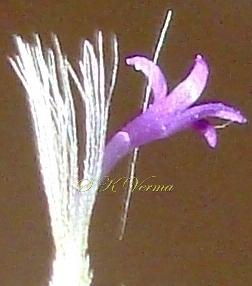CYANTHILLIUM
Cyanthillium
Blume, Bijdr. Fl. Ned. Ind. 889. 1826; Strother, Fl. North. Amer. @ eFloras.org 19-21: 204.
Annuals, 20-120 cm. Leaves mostly cauline (at flowering); petioles +/- winged; blades ovate to trullate, deltate, oblanceolate or spatulate, bases +/- cuneate, margins serrate, apices rounded to acute, abaxial faces hirtellous to densely pilose-strigillose, resin gland-dotted, adaxial faces scabrellous or glabrate. Capitula discoid, +/- pedunculate, not subtended by foliaceous bracts, 12-100+ in corymbose arrays, 6-15+ cm diameter. Involucres campanulate to turbinate to hemispheric, 4-5 mm diameter; phyllaries 24-32+ in 3-4+ series, the outer subulate to lanceolate, inner +/- lanceolate, all charataceous, margins entire, tips apiculate to spinose, abaxial faces strigillose, resin- gland-dotted. Florets 13-24+; corollas lavender to pink or purplish, tubes longer than funnelform throats, lobes 5, linear-lanceolate, nearly equal. Cypselae columnar, not ribbed, strigillose. Pappi of +/- 20, persistent, outer scales 20, caducous.
12 species
Cyanthillium cinereum
Cyanthillium cinereum
(L.) H. Rob., Proc. Biol. Soc. Wash. 103: 252. 1990; Strother, Fl. North Amer. @ eFloras.org 19-21: 205; Veronica cinereal (L.) Less., Linnaea 4: 291. 1829; Hook. f., Fl. Brit. Ind. 3: 233. 1881; Collett, Fl. Siml. ed. 2: 245. 1921 (Reprint 1980); Sharma & Kachroo , Fl. Jammu (Illustr.) 2: t. 117.1983; Kaur & Sharma, Fl. Sirmaur 399. 2004; Singh & Sharma, Fl. Chamba Dist. 438. 2006; Fl. China @ eFloras.org 20-21: 365; Conyza cinerea L., Sp. Pl. 862. 1753.
Annual or perennial herb, up to 1 m tall. Stem erect, usually branched above or rarely from base, striate, grey adpressed-pubescent with T-shaped hairs, glandular. Leaves cauline, alternate; petiole 1-2.5 cm long; leaf blade rhombic-ovate, rhombic-oblong or ovate, 3-6.5 cm x 1.5-3.2 cm, apex acute or obtuse, margin subentire or coarsely toothed, base cuneately attenuate into winged petiole, pubescent on both surfaces, often glabrate, gland-dotted beneath, lateral veins 3- or 4-paired. Capitula 5-6 mm long and 6-8 mm across, discoid, purplish on 0.5-2 cm long peduncles, numerous in corymbs. Involucre campanulate, 4-5 mm x 6-8 mm; phyllaries 3-4-seriate, linear to linear- lanceolate, acute, often purple-tinged, outer smaller, 1.5-2 mm long, becoming progressively larger up to 4 mm long in innermost series. Receptacle flat, epaleate, foveolate. Disc florets: 19-28, bisexual, fertile. Corolla purple, tubular, 5-6 mm long, sparsely puberulent, glandular; tube longer than funnelform throat, lobes 5, linear-lanceolate, puberulent and glandular at apex. Cypselae cylindric, ca. 2 mm long, truncate at apex, narrowed at base, finely-ribbed or not, densely hairy and glandular. Pappus 2-seriate, white, simple, outer setae many, short; inner setae 4-5 mm, scabrid.
Common Names: Little Ironweed, Purple Feabane; Sahadevi (Hindi)
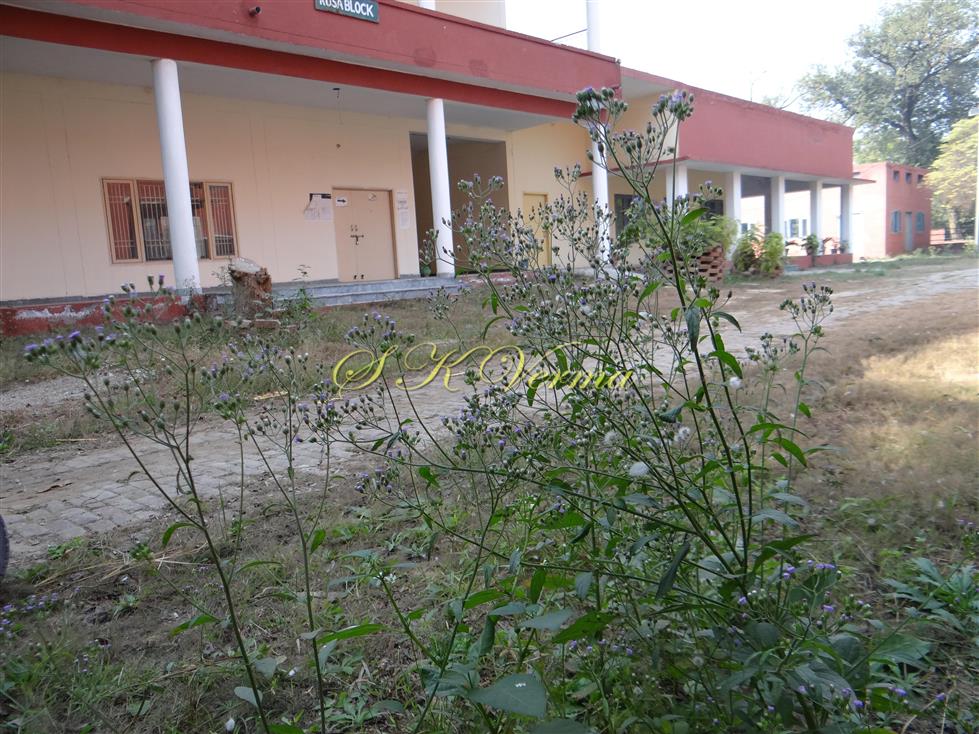
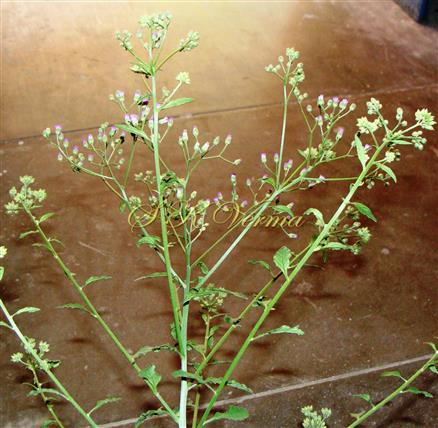
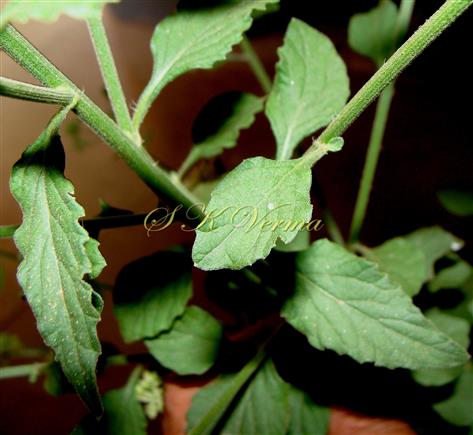

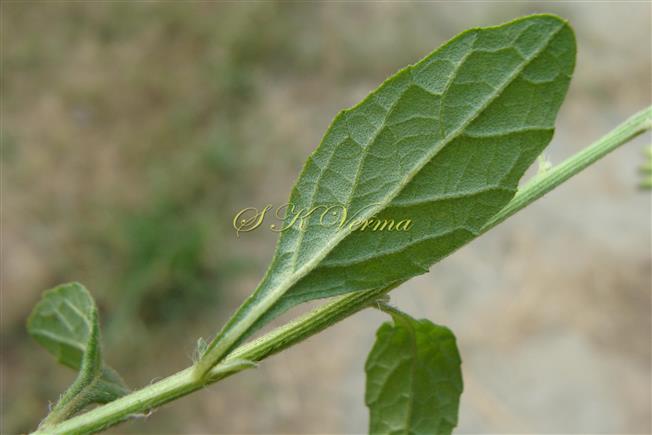
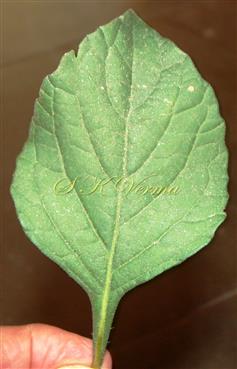
 with glands and hairs-DSC01820A.jpg)
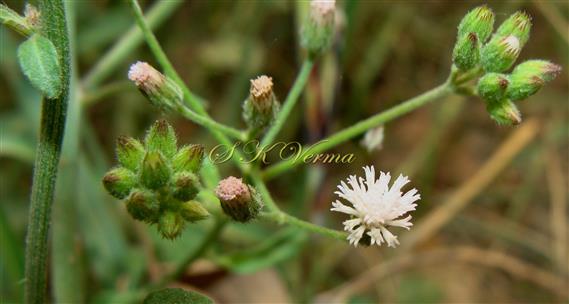

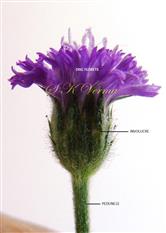
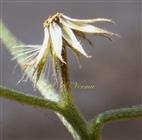
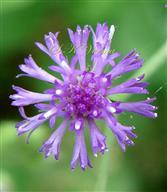

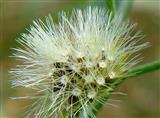
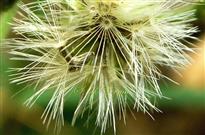
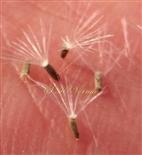




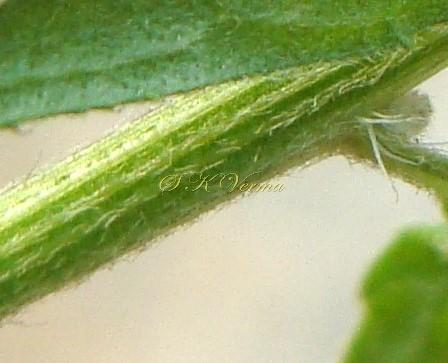


 with glands and hairs-DSC01820A.jpg)





